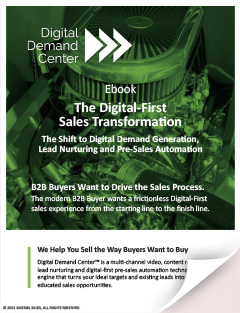In 1997 one of the first sales jobs I had was for a Silicon Valley start-up called Autoweb.com selling websites and leads to car dealers. Some of you might not remember what it was like to buy a car prior to the internet. In those days you would walk onto a car lot and the only pieces of information you could access were the Kelly Blue Book value of your trade in and the MSRP on the window sticker (if you were really savvy you had Consumer Reports and JD Powers comparison and safety data). The typical sales person would then pitch the features and benefits and take you into a room to bust out what was called the “Four Square” http://consumerist.com/2007/03/dealerships-rip-you-off-with-the-four-square-heres-how-to-beat-it.html
Essentially the Four Square was a way to keep the car salesperson in total control of the sales process by allowing them to decide when and where they would share information. It was about obfuscating the information to close business. In the 90s buying a car was ranked just below a root canal and divorce as unpleasant experiences. Companies like Autoweb.com changed an entire paradigm and subsequently the buying experience because we made the price and features of buying a car transparent and accessible when and where the buyer wanted it. That’s not to say this was an easy model to get dealerships to adopt. I was cursed out and hung up on 100s of times by Dealership owners and GMs when they figured out what we were doing.
By 1998 car buying had changed. My Autoweb.com clients that adopted this model and embraced the new paradigm of transparency and service ended up seeing their sales increase in their markets by as much as 35% in a two year period. A fair amount of the businesses that hung up the phone on me ended up going out of business, literally out of business by 2000. This new way to buy cars was such a successful model because when you sold to the buyer the way they wanted to buy you won more business. What did the buyer want – transparency and not to be “hard sold” they wanted to engage in dialogue with an expert in a situation where they had as much information as the seller and control of the process.
In Where Good Ideas Come From Steven Johnson talks about the 10/10 rule for innovation. Where he says “it takes a decade to build a new platform and a decade for it to find a mass audience”. He also talks about true innovations coming from “adjacencies” – the connections of ideas and technologies in new ways to produce improved results and “innovative systems have a tendency to gravitate towards the ‘edge of chaos’: the fertile zone between too much order and too much anarchy. At Gabriel Sales we think that Steven Johnson is spot on. We are seeing…
- ….all the adjacent locations on the Internet – Websites, Social Media, Publisher Sites, etc. , the technologies of the Internet from YouTube, Go-To-Meeting, Webcasting Platforms, Slide Share, and the SaaS technologies of Saleforce.com, Mail Chimp and Marketing Automation Platforms, and Telecom Technologies…
- …and well trained telemarketing, telesales and outside sales reps….
- ….and marketers armed with analytics tools…
…as able to execute a complex sale B2B sale in the same way Autoweb.com was able sell a commodity to a single end consumer 12 years ago. By integrating all of these tools into the right processes —prospect teams (the people we are trying to sell to) responsible for buying can work transparently and seamlessly with sale and marketing teams (Gabriel Sales)— to create a mutually beneficial experience that is dedicated to helping buyers buy the way they want to buy. The rules of engagement have changed and 20 years since the inception of the Internet, the way we connect as human beings and sell to one another is now permanently changing. Always be closing (at least in the first stages of the buying cycle Awareness and Interest to stay with the Glen Garry Glen Ross metaphor) is no longer about “selling” it’s about transparently “serving and sharing” first.




